The beautiful and elegant Luxman PD-264 direct-drive turntable is delightfully different, in the way Luxman gear often is and would make a wonderful first ‘proper’ turntable.
The Luxman PD-264 is a deck you see often here in Australia. Sold at an affordable price, in a competitive market and when Luxman was a heavy hitter, there is much to love about this elegant, understated machine.
Features
The Luxman PD-264 comes with a decent, low-mass tonearm, direct-drive motor and balanced platter, in a slimline chassis. There’s a hint of wood trim and the deck has a cool vintage look. The platter is heavy, which is a good thing. With much of the platter weight distributed around the edge, excellent wow & flutter characteristics and stable rotation are the results.
The tonearm is a straight design to increase stiffness and reduce resonance, something which tends to be found on tonearms designed for high-compliance type cartridges. The root section of the tonearm is of double-pipe structure, to further reduce resonance. A knife-edge bearing is employed and the head-shell is integrated into the tonearm, further suppressing resonance.
Speed control is via a toggle switch and a strobe is provided, for trimming the speed to precisely 33.3 or 45 RPM. The PD-264 is generally a very reliable deck and requires little maintenance, other than lubrication, cleaning and tweaking of the tonearm and cartridge alignment.
A key feature of the Luxman PD-264 is the automatic end of disc arm lift function. When disc playback finishes, the tonearm automatically lifts and the platter comes to a stop. This function helps prevent unnecessary stylus wear. The strobe on this deck is provided by LEDs which enable a clearer strobe indication than is common at this price point.
Luxman PD-264 Specifications
Type: auto-lift up record player
Drive method: direct drive
Motor: DC servo brushless
Platter: 1.8kg, 300mm aluminium die-cast
Speeds: 33 and 45rpm
Signal to noise ratio: 60dB
Wow and flutter: 0.035% wrms
Tonearm: static balance type
Effective length: 240mm
Overhang: 15mm
Cartridge weight range: 4 to 11g
Dimensions: 438 x 125 x 365mm
Weight: 8kg
You can read a little more about the Luxman PD-264 here, at the Vinyl Engine.
Problems
This particular PD-264 had a problem with the mechanical tonearm lift actuator and switch. It was sticking and therefore not stopping the player at the end of a record. Having worked on many of these machines over the years, I’ve found that these mechanical switches can sometimes be sticky, causing arm lift operational problems.
There are a couple of reasons this might occur. Perhaps lubricant was used at some point, despite the service manual stating that the mechanism is oil-less. Maybe this happened for a certain batch of decks. Perhaps someone used mineral oil on this one back in the day, the volatile components of mineral-based lubricants evaporate over time, leaving a residue. Maybe someone spilled a beer on this old turntable, whatever the cause, the issue needs to be fixed.
When presented with a sticky arm lift actuator like this one, I use a solvent to remove any residue and then try to run the mechanism without oil as designed. Sometimes though, I find a drop of special thin synthetic oil can be helpful and that was the case with this machine.
I’ve had commenters mention that oil is not necessary and yes, in theory, that’s quite right. Having worked commercially on dozens of lovely Luxman PD-264 turntables and tonearms, I can tell you that the designers and technical writers at Luxman never considered how these decks might be running 40 years after their date of manufacture. They probably thought we’d all be living on Mars by now!
So, I’ve developed some special techniques and procedures to deal with this problem and many others in vintage hi-fi gear. I’ve also had to replace one or two switches in these PD-264s, due to unreliable operation. Other than that, this great little deck needed nothing more than a service, clean and for the cartridge and tonearm to be set up correctly.

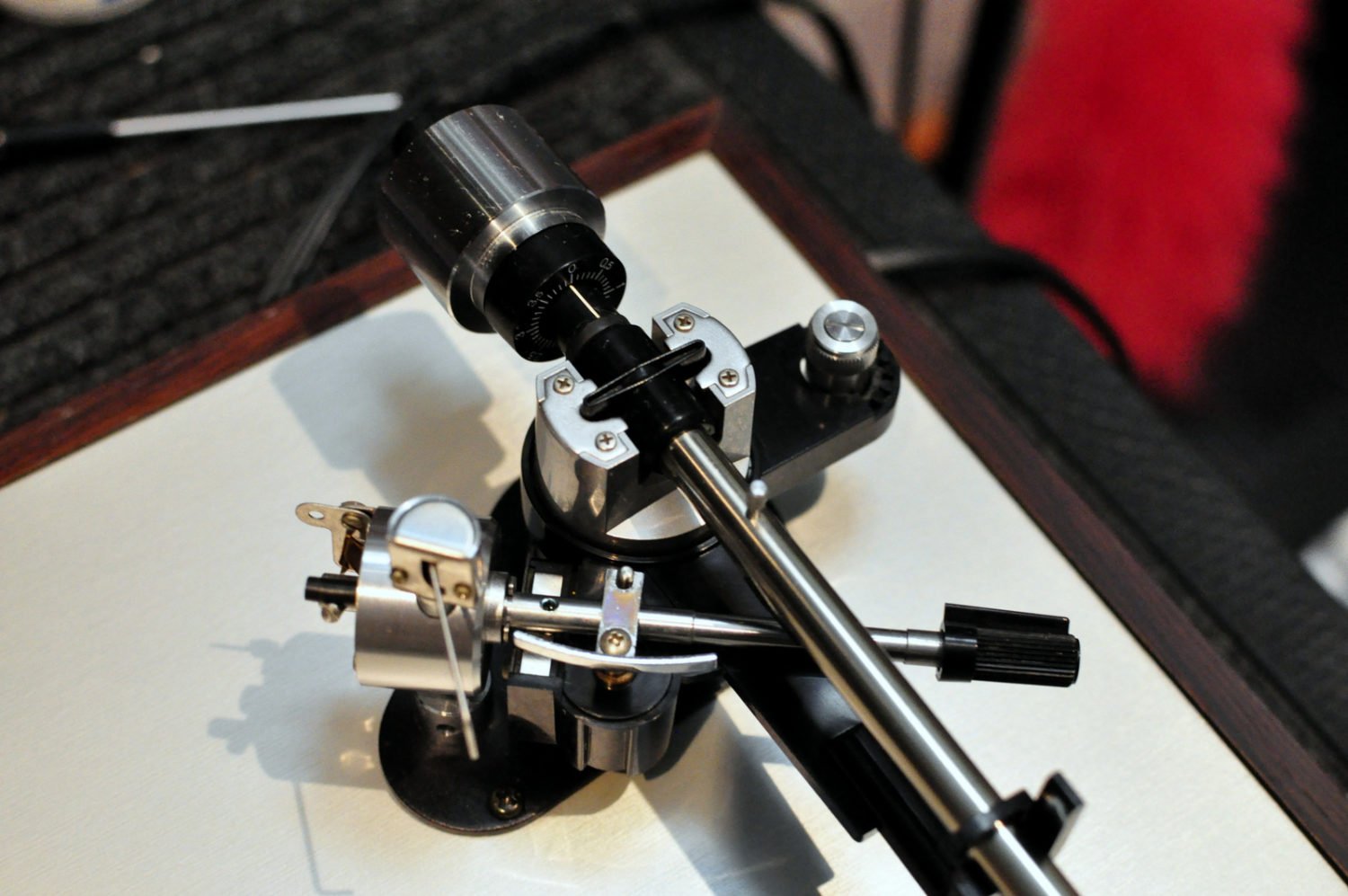
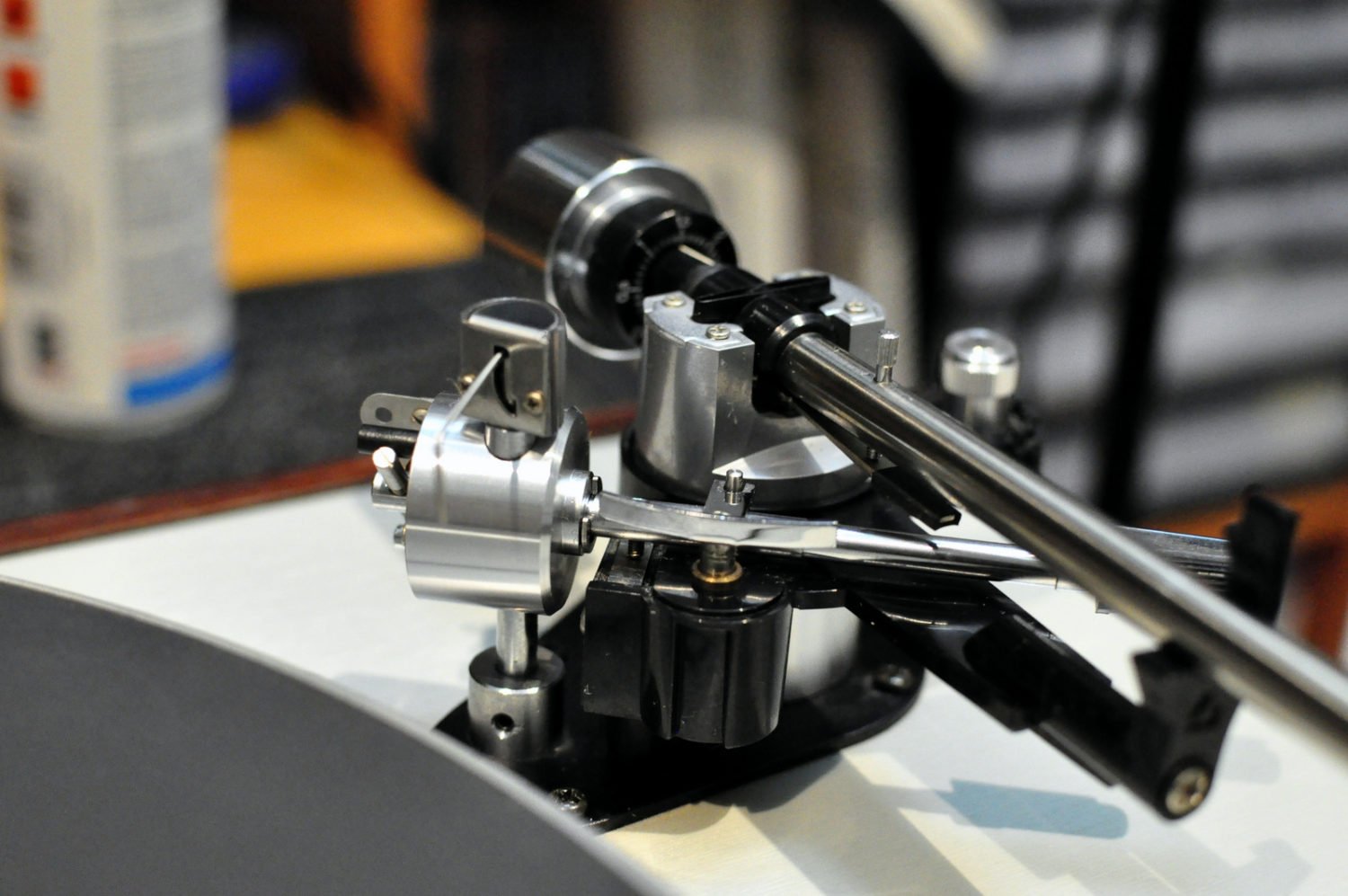
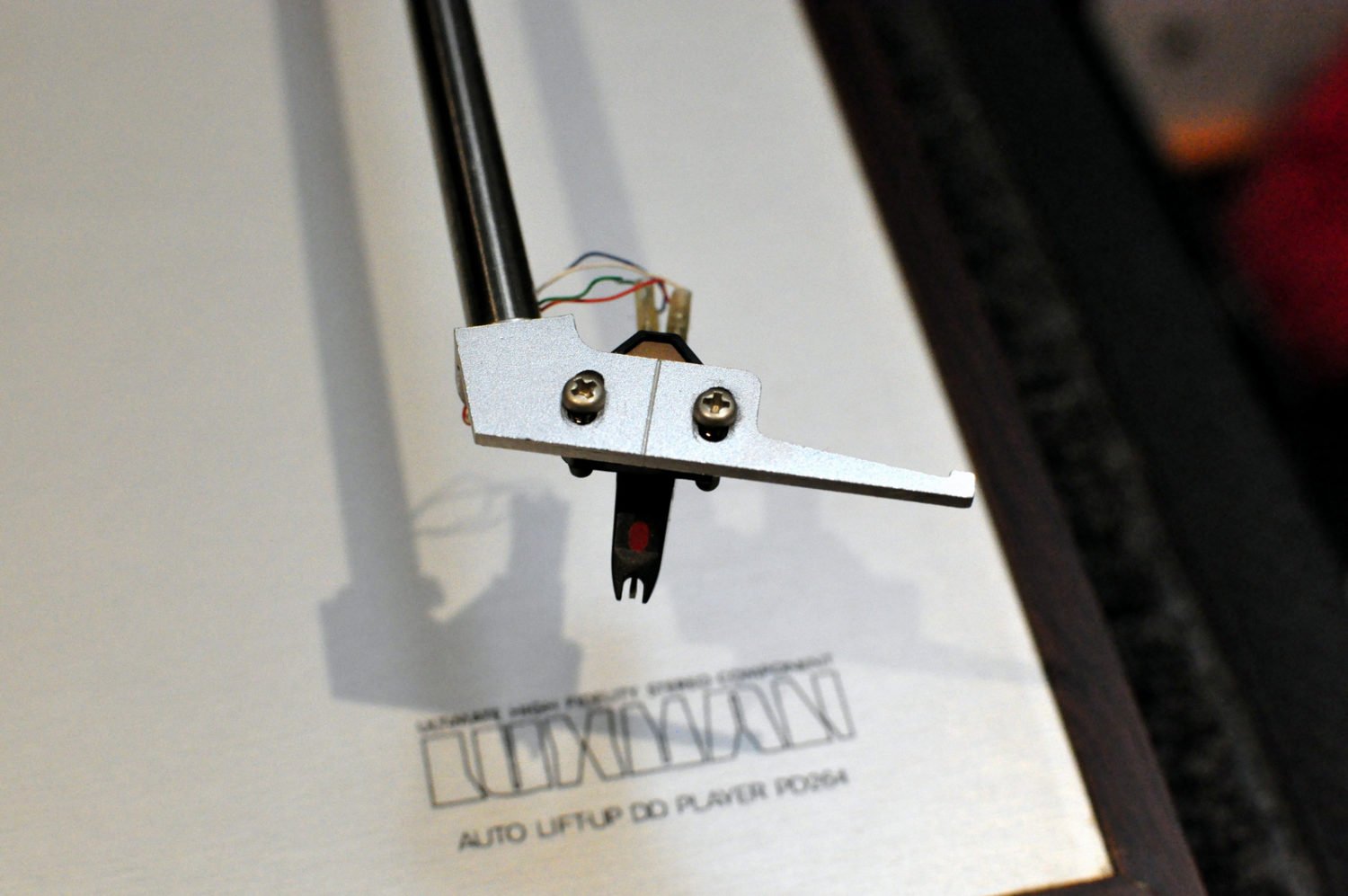
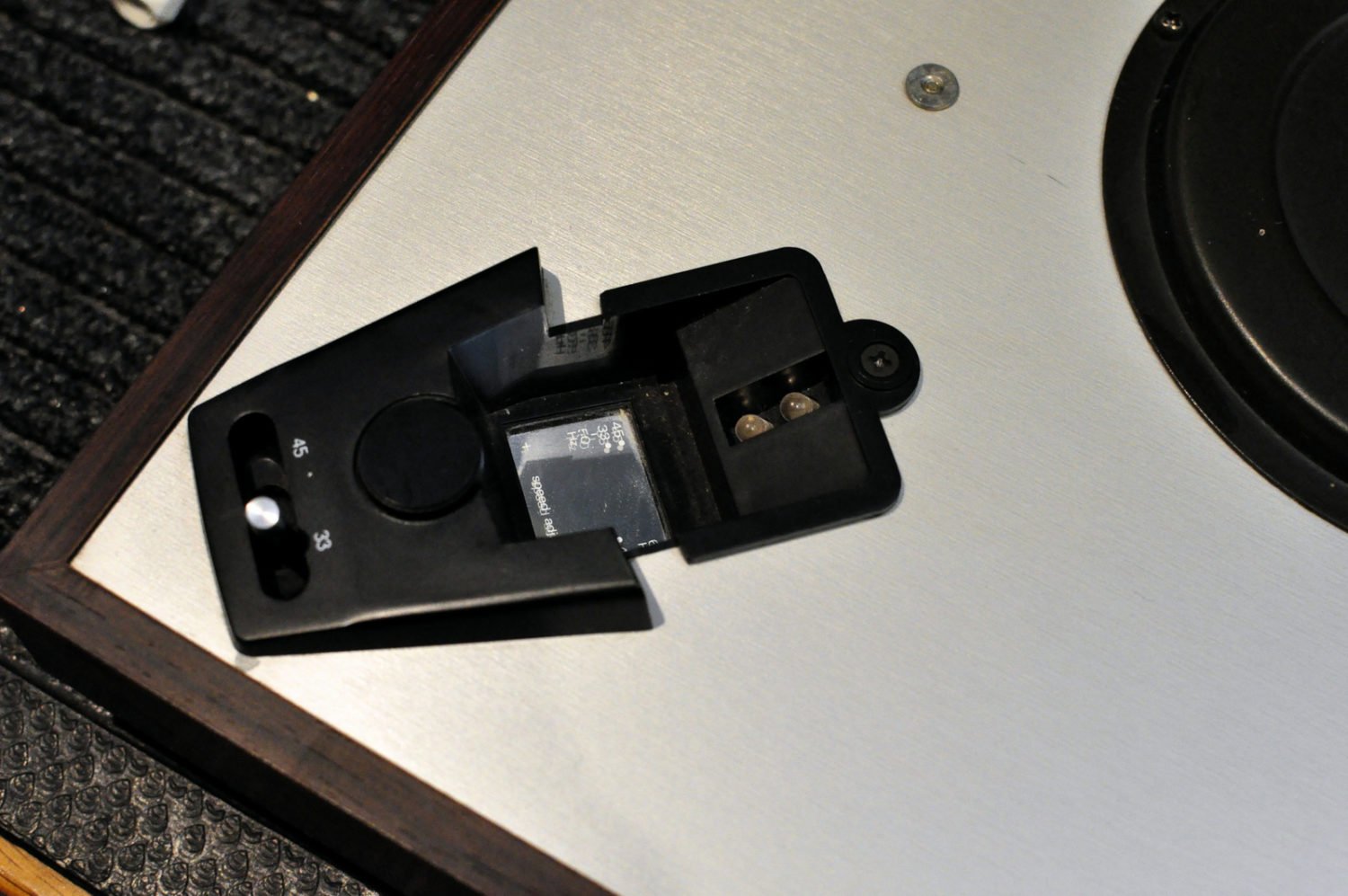
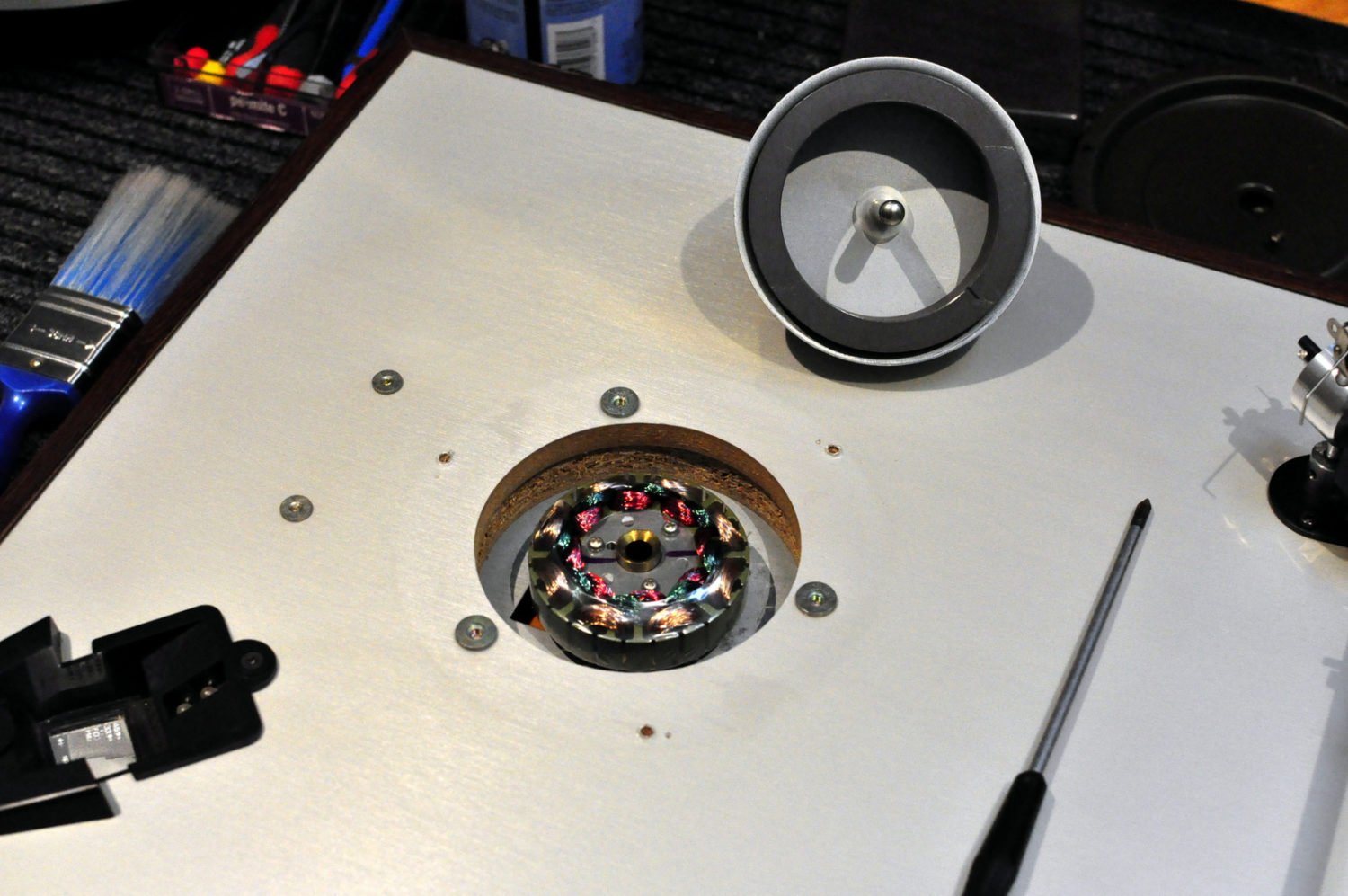

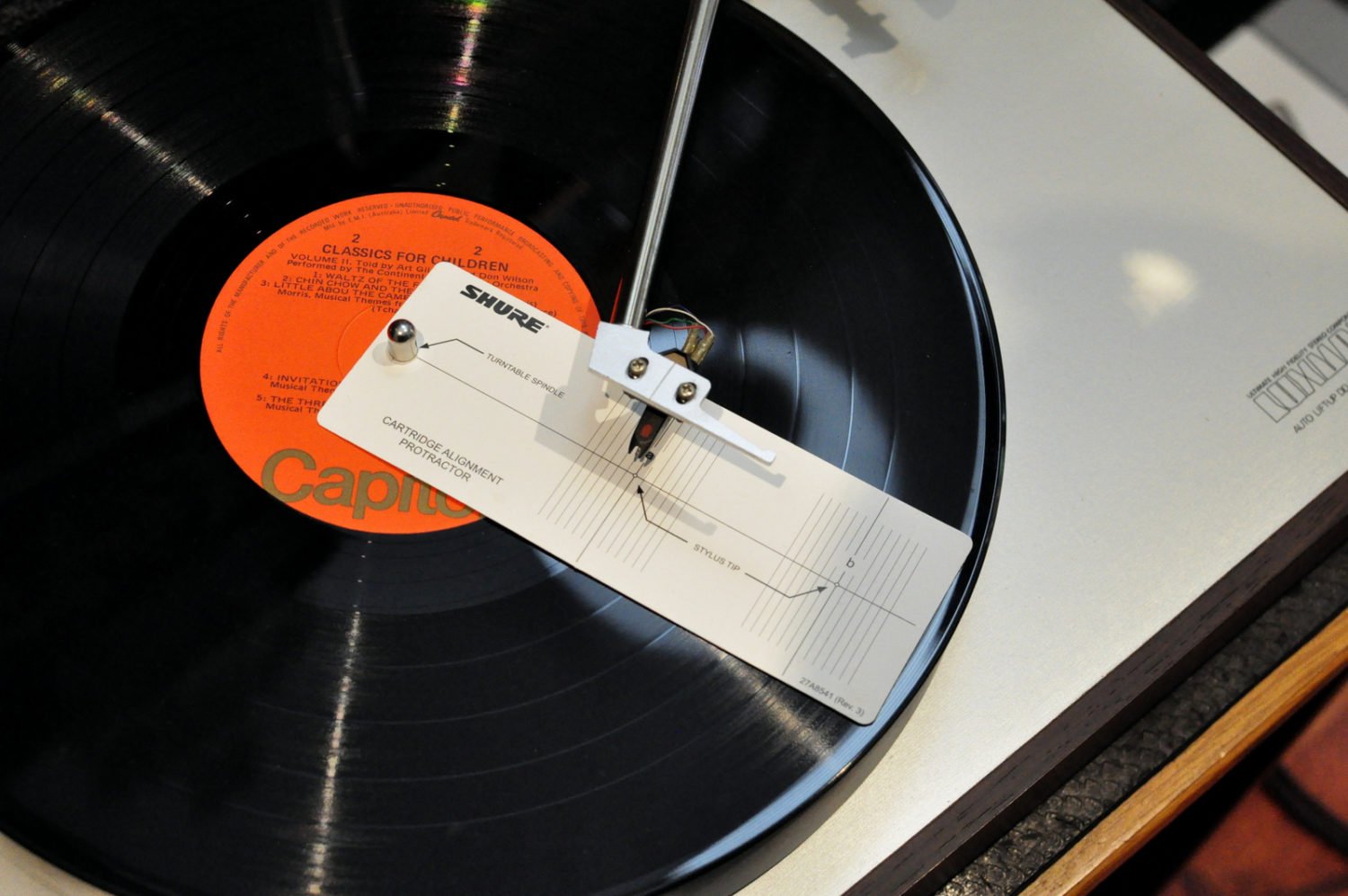
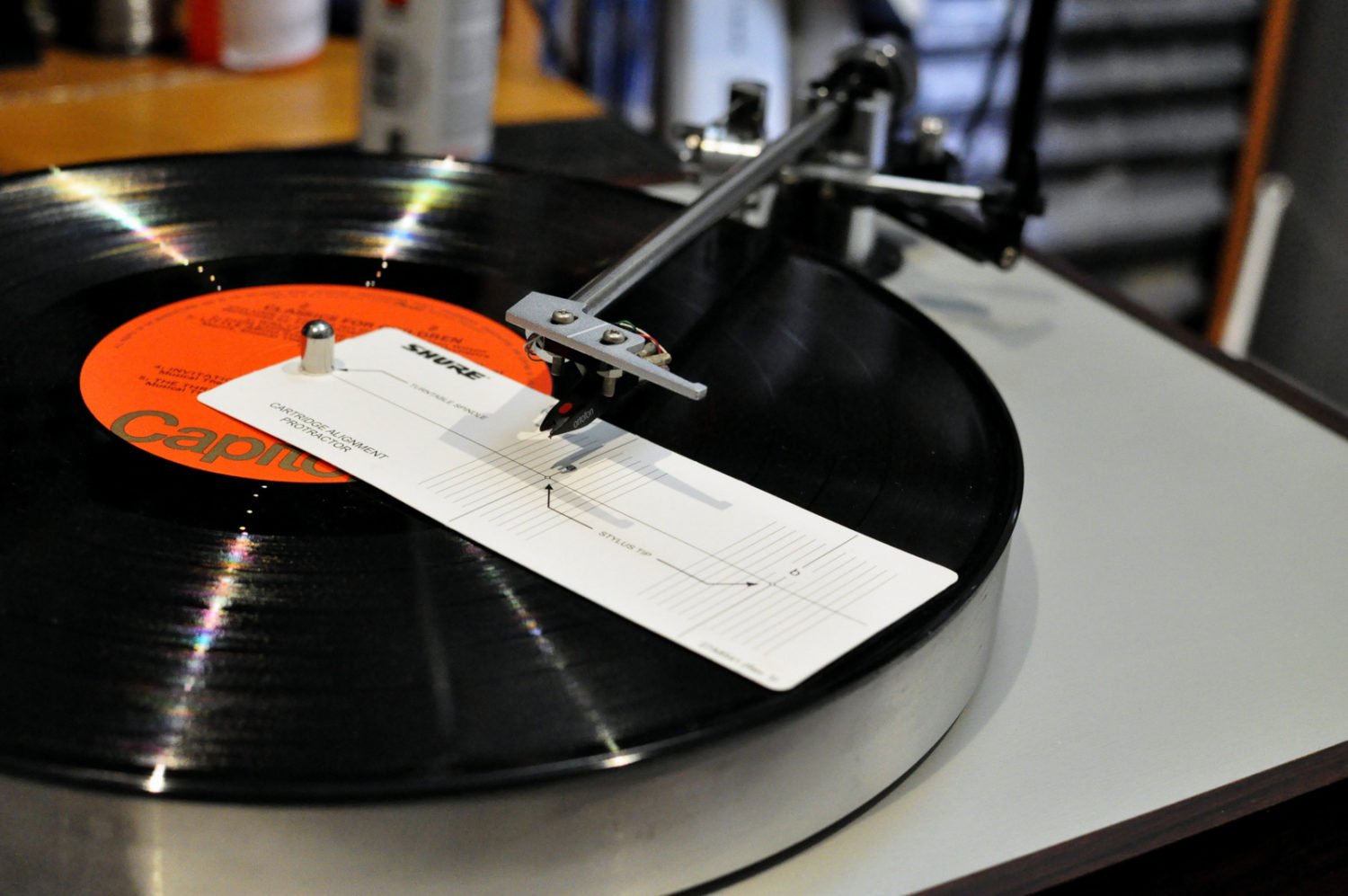

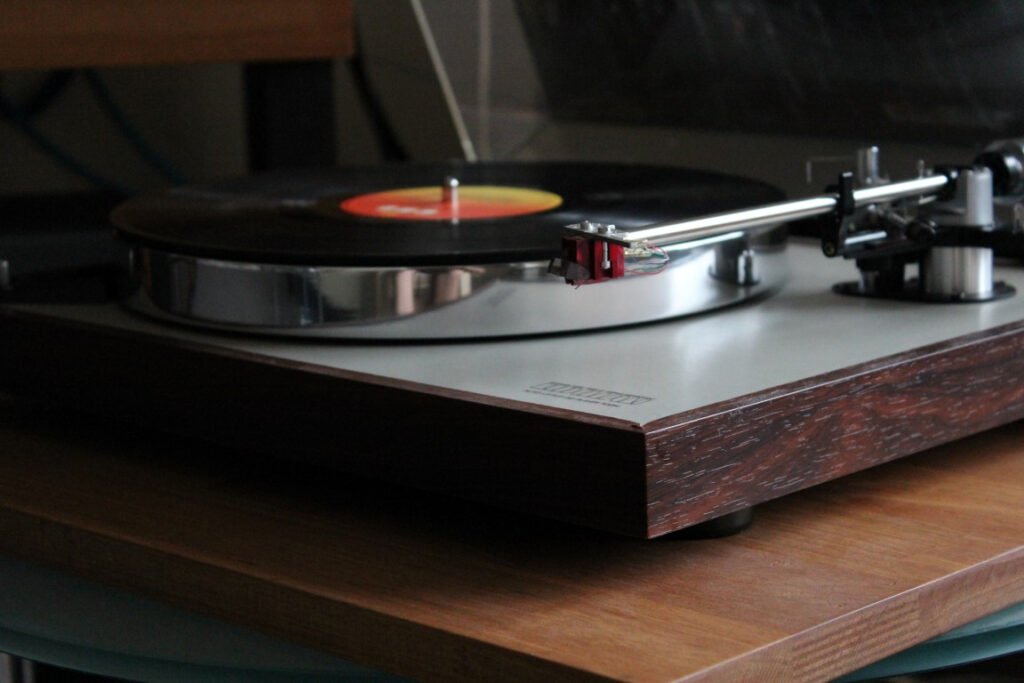
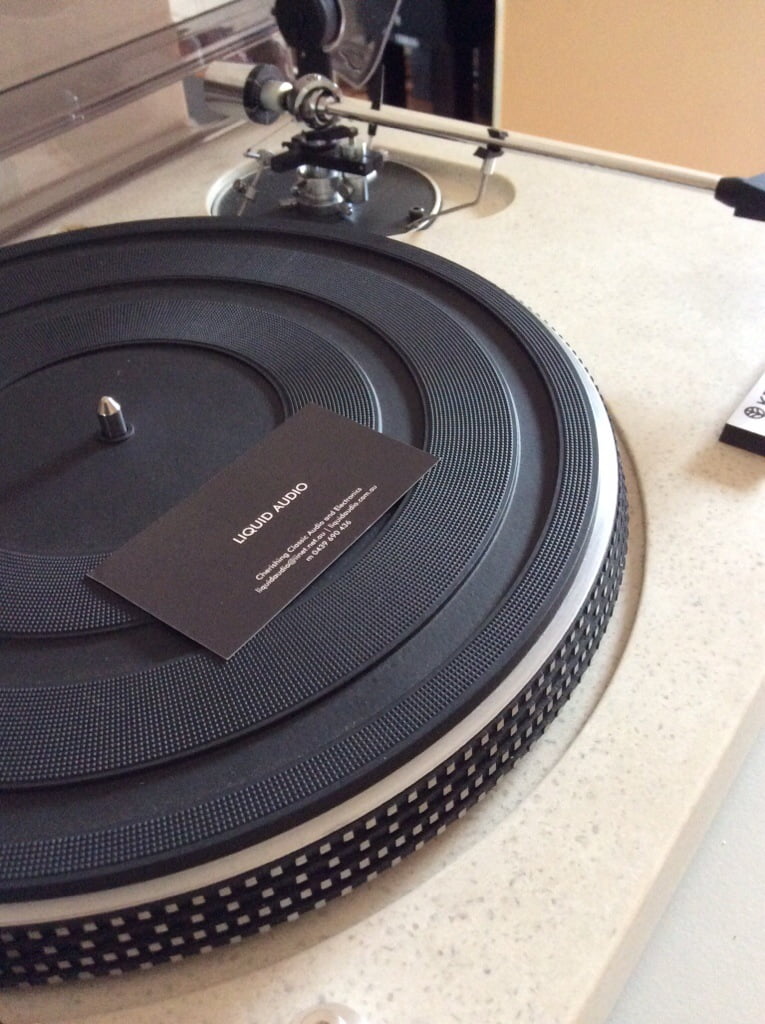

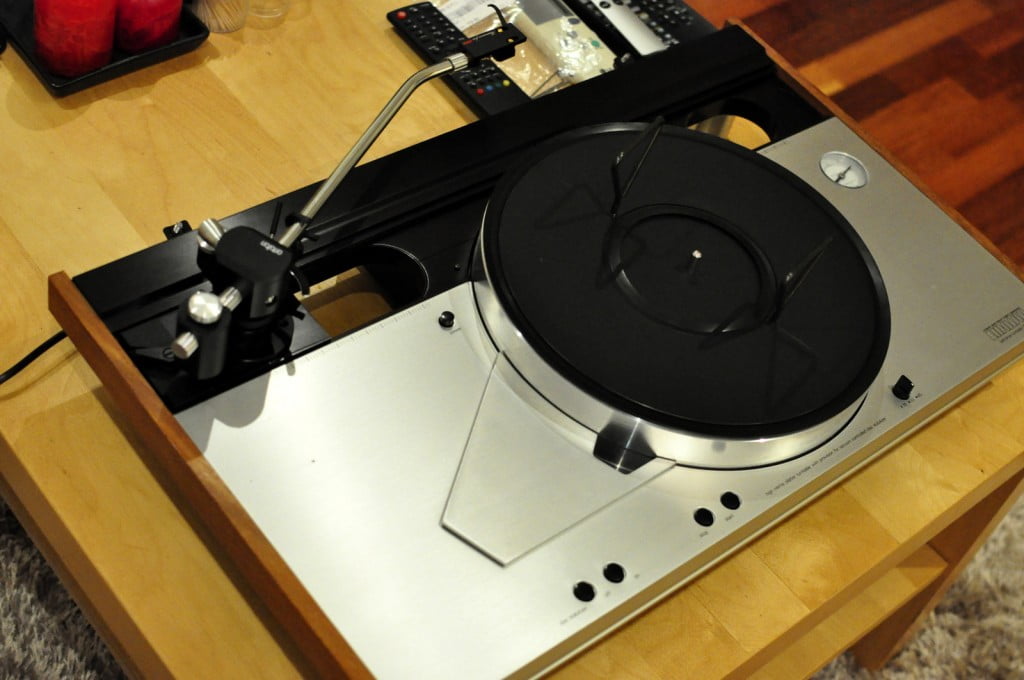

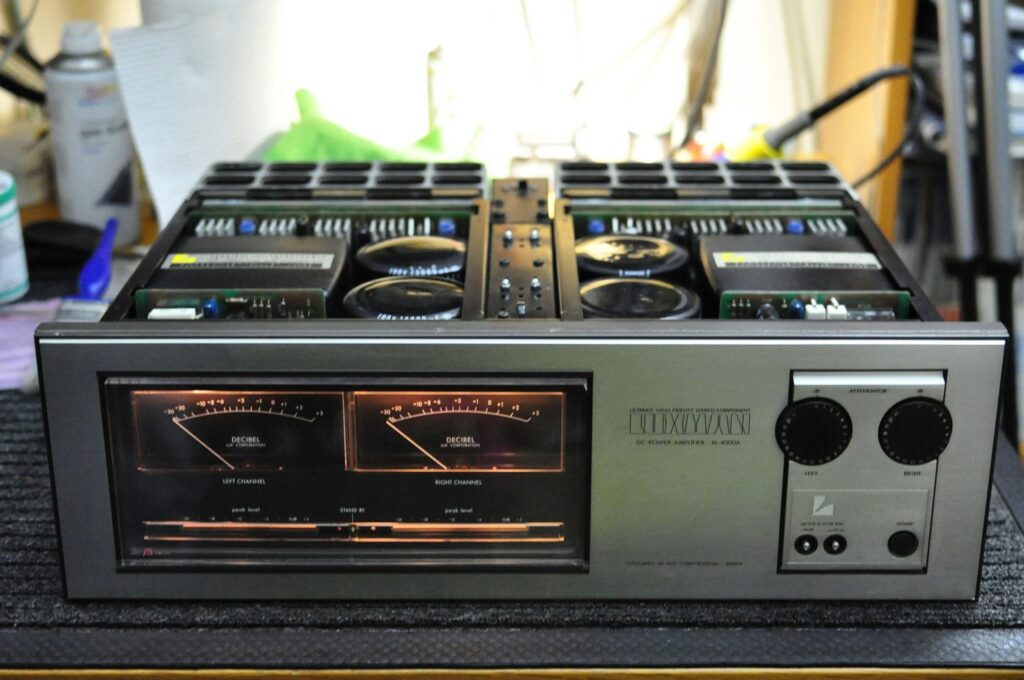
Thanks for the post and pics. I have this turntable and like it a lot but have mixed feelings about the tone arm. The mechanism feels very light/sensitive and kind of unstable. Just doesn’t feel as solid as other tonearms I’ve own, including light weight carbon arms. I find myself losing control of it and dropping the stylus on records more than I wold like. Do you know if the tonearm is replaceable with other Luxman or aftermarket models? If so, would this provide any appreciable benefit?
Also, do you know if the head shell is interchangeable? If so, mine is difficult to remove and it’s kind of a hassle to change out carts.
One other thing I notice about my Luxman is that it’s not very tolerant of foot traffic (I have a son with a heavy walk) and the stylus skips while playing. My Rega RP3 doesn’t do that 🙂 .Any suggestions to remedy this? Thanks in advance for your time.
Hi Bruce, it sounds like the arm may not be correctly set-up, as it is actually a really nice, though low mass, tonearm. By nature and because of the cartridges that were meant to be matched with it, it is light and must be carefully dialed in. You definitely should not mess with a classic deck like this by changing arms. This would not be easy to do and would almost certainly ruin the value of the deck and possibly also its performance. From memory the headshell is fixed, again, for good technical reasons. The deck deserves a really nice high compliance cart, so perhaps try to find something suitable and leave it in place!
The 264 is an unsprung DD deck, with a low-mass, light-tracking tonearm, so it will be sensitive to bumps and shock. You need a good solid platform, preferably attached to a wall, decoupled from the floor. This is the best way to avoid problems related to noise transmission. There are dedicated platforms you can buy for this purpose. You might also try sorbothane or something similar under the deck, to absorb shock.
Cheers, Mike!
Thanks for your feedback and suggestions, Mike. Do you know of any online tips or videos to help dial in this tone arm? Or, should I just follow standard set up procedures with more attention to detail? Also, have any suggestions on which carts might pair up with this TT nicely?
Best,
Bruce
Hi Bruce, I don’t but suggest you download the owners manual if you don’t already own it. You need precise tools to set up a tonearm so I am assuming you have a good stylus pressure gauge and also know to adjust the headshell tilt when looking front on to ensure the correct azimuth. Follow Luxman’s instructions and you can’t go too far wrong. Have a search for high compliance cartridges – there are many, most of them moving magnet designs from Shure, Ortofon and others. Have a look at the Vinyl Engine for more information on how to set up arm, manuals, comments and feedback from owners about cartridges they have used. I suggest an Ortofon OM20 or OM30 as a good starting point!
Thanks Mike. How repairable is the motor on the Luxman PD 264? A local tech told me that the capacitors on the direct drive turntables wear out and often very difficult to replace due to their small size or design of the motor. What’s your take on this for the Luxman or the DD’s in general?
Hi Mike, another question for your about the Luxman. Do you think it’s possible to replace the tonearm base on the PD 264 with one from a PD-284? I cam across one. It looks nicer and has the optical lift. Thanks for your feedback.
Hi Bruce, it may be possible, but as I’ve said, you kill the value and collectability of these lovely decks by swapping parts like that. I would suggest simply getting a PD-284 if you prefer the arm arrangement on that deck and keeping both completely intact!
Hi, not sure if this is the appropriate place, however, any idea where I can source a spare part for my PD264 tone arm?
Hi John, there are no new spares available, only secondhand parts. Often best to pick up a spare deck or non-functional unit for spares. I have some parts but I keep these for decks I repair. Cheers, Mike
Hi Mike, my PD-264 seems to be slowing down. Even when I turn the speed adjustment to the highest setting it sounds slow, and the strobe indicator doesn’t make any sense – the deck is way too slow when the 50Hz light is stable. I’m hoping there is an easy fix, like lubrication?
Hi Hamish, could be an easy fix or something that takes a little longer to troubleshoot. There’s no way to tell without looking at the deck unfortunately, but a thorough service should sort her out. If you do decide to lubricate or clean anything, be very careful what you use. Almost nothing that is readily available in retail world is of any use, most causing more problems than they solve. If you have the right products and technical skill then go for it, otherwise I strongly suggest you take her to someone who specializes in this sort of work!
Do you know who could service a PD 264 IN Brisbane? Stroboscope wrong speed etc etc
No idea mate. I do know that there are only a couple of us in the whole country doing this stuff properly, sorry it’s not much help over there in Brisbane!
Any idea of the years of fabrication of the PD-264
Hi JC, it’s from the ’80s, but I can’t tell you the exact range at this point, needs further research!
Hi Mike, I am the proud owner of PD264. Today, I wanted to clean the shaft and put a new oil. I removed the black tray and was able to access the engine. I did not manage to remove the bell with the magnet pulling up. I turned the turntable and unscrewed the DD engine from its wooden base. I was able to remove the magnetized bell. When I put the magnetic bell back in place and screwed everything back in, the engine turns and stops intermittently. I did not change any settings. The welds are intact.
Everything worked perfectly before. I removed and replaced the magnetized bell on the electric coils of the engine. Is there a setting or a precise way to put the bell back? I saw a notch on the magnet. Thank you for you precious help.
Hi Sam, very sorry to hear you’ve had this problem. Actually this does highlight something I am often saying and that is that much of the work you see on my site is specialist stuff and it’s generally not advisable for most people to attempt this type of maintenance. I advise avoiding removing the motor, it’s almost never necessary. That being said, the first and obvious question I have to ask is – is the platter back on the deck? The drive circuitry uses the inertia of the platter to provide integration of the driving pulses, thus smoothing their delivery. Without the platter attached, most direct-drive motors will pulse or ‘cog’, possibly leading you to conclude the motor has a problem when it does not. If the platter is on, the next steps involve critical inspection, testing etc, to determine what’s gone wrong. For me to assist, I’d need the deck here. Are you anywhere near Perth?!
Thanks a lot for this information! My Luxman PD264 that my father bought for me in 79 or 80 has been very much in use, and has been really solid and troublefree. But a while ago it started scratching/rubbing, and after a while it stopped. I put it away for some time believing it was broken, because when I lifted off the platter, it only moved in pulses. The problem turned out to be really banale, I opened it, and the screws holding the engine were loose, so when I tightened them everything worked! I wouldn’t have known this if I hadn’t read this thread. Thanks and best regards from Oslo! Espen Holtestaul
Hi Espen, Happy New Year and that’s great to hear! I’m lucky to have visited Oslo and elsewhere in Norway. What a beautiful country and wonderful people. Regards from Perth!
Thanks a lot! Same to you, and thanks for this very interesting site!
Thank you Mike, unfortunately I’m a little far from Perth, I’m writing from France. Indeed, I put the platinum in tension without the platter and if understand your expertise, that’s why the motor runs in pulses. The platter is currently at the coachbuilder to polish the edge of the board. As soon as I get it, I’ll do a new test.
Best regards
Sam
Hi Sam, no problem, I think you’ll find it runs normally with the platter in place, fingers crossed, let me know how you go!
Hi mike, how easy is it to rewire the tone arm on the PD264? I’m confident wit my soldering ability but cant find any information on how to go about threading the new wires through the arm etc…
Hi Chris, tonearm rewiring isn’t an easy task for most, it’s technically and mechanically challenging and just generally fiddly dealing with wire not much thicker than hair! Anyway though, if you are up for it then give it a shot by all means. Youll need a very fine soldering iron though, some high-quality solder, tools and a loupe!
Zero lubrication is used in the stop/lift mechanism of the Luxman PD 264 and none should be used as per service manual. Any adjustments should be done by slightly bending the stop/lift wire as per service manual instructions.
Hi Stephen, thanks for your comment. What you’ve noted is correct in theory, but unfortunately doesn’t account for the varied states of service in which we find these machines 40 years after manufacture. I’ve developed this procedure for PD-264s with sticky arm lift actuators, having worked on many of them. These arm lift mechanisms often work as designed, with no lubricant, but sometimes the actuators are sticky. Exactly why doesn’t really matter at this point, but in these cases, following the service procedure will do nothing to address this, nor was service after 40 years ever considered. I find it useful in these cases to use a solvent flush of the affected parts, followed by a small amount of a special low viscosity synthetic lubricant.
Any chance you know where I could acquire just the SENSING PIN for the auto-lift mechanism on the PD-264? Or perhaps you’ve got the original spec for it and I could make/fabricate one myself. I know this is a shot in the dark, but this seems like the best of any place to ask this question. I’ve found more info on this page specifically about the PD-264’s lift mechanism than all other places online combined.
Hi Nick, glad you’ve found the article helpful. In a case where the pin was missing or broken, I’d fabricate one. I don’t have specs for it, so that would be based on me having a mechanism here in front of me.
Hi Mike, Having just picked up a PD264 I appreciate all the information on the table by you and your site. One question I have is the tonearm is laterally a bit loose in the round housing that the knife bearing sits in. In other words, if I hold the tonearm tube I can move it back and forth maybe 1/16″. The TT sounds and performs great, so maybe the clearance is as designed.
Hi Robert, thanks for your question and I’m glad you’ve found the site helpful. Without being able to perform a hands-on assessment, it’s hard to know exactly what’s going on there and how exactly you are testing it. The knife-edge bearing has essentially zero freeplay when properly seated and in good condition as you may know, but the vertical (radial) bearing is conventional and will have some play. It should be almost imperceptible though. Typically, we would measure movement in both axes with a dial gauge and again I could do that if the deck were here. I’m guessing you are not local!
Hello Mike. I have the same issue Robert brings up. The knife edge for arm vertical movement is not the problem but rather the cylindrical housing it sits in for rotation. This has a lot of play in it and the whole arm can wobble around with very little effort. It was like this decades ago when I first bought it and causes audible noise. Any ideas? I may try to fix myself but as mentioned in the thread, the manual just has a rough exploded diagram. Ideas? Thanks so for your helpful suggestions to everyone!
Dean
Hi Dean and thanks for commenting. I can’t find or recall what Robert said, but play in the arm should be addressed, where possible. It’s hard to comment without the deck in question in front of me, but all of these machines I’ve worked on have exhibited a small amount of play in the lateral bearing, and of course some in the knife edge, when manipulated a particular way. Excessive play in the arm mount and/or lateral bearing indicates wear or the need for adjustment though and would not be acceptable in a deck I owned. These arms can be disassembled, it’s been quite a while since I’ve disassembled one but that may be your next step.
Fantastic! Just read all these comments and feel I now know what I am doing. My PD 264 has tonearm wiring probs so I’m waiting for the wire to arrive. Meanwhile I was looking into why the motor hums when it’s switched off and why the motor doesn’t run smoothly when there’s no platter. So, thank you!! What a relief! I thought the motor was about to die. The hum was due to the switch (located at the end of the lift arm) being filled with crap and leaking current. So I’ve solved everything except doing the wires. Any advice there would be much appreciated. But this was quite a find so thanks Australia! BTW my plinth is black. Can’t find another like it – have you seen a black 264?
Really glad you found the article and discussion helpful Tony. Arm re-wiring can be tricky so take your time there.
Hi Mike, I’ve had the platter and motor cover off plus removed the bottom cover, but I can’t see how and where you would lubricate this turntable. Q: does it actually need lubrication or are there sealed bearings?
Hi Chris, they do need lubrication, running now decades longer than their design engineers anticipated. I consider this specialist service work as there aren’t many who even know about this let alone know what lubricants to use etc.
Hi Mike, are new perspex lids/covers available for these? I need one and maybe a good service.
Hi Tony, covers are available if you search online. We can also have custom lids made, but the pre-made ones look pretty good for the money. Hop over to the contact form if you’d like to book a service. We are currently full but I’ll do my best to assist.
Hello
I have had my PD-264 since around 1980. When you rotate the knob to lower arm and start the platter, it does not always start. Now it does not start at all. Is there a way to have the turntable refurbished? Could it be the micro switch
Hi Wayne, and yes we do this type of overhaul and refurbishment work. I can’t say what’s wrong with your deck without inspecting it of course, but microswitches can fail, can be tested and can be replaced. It sounds like she’s long overdue for general maintenance so if you live in Western Australia you are most welcome to book her in.
Hi Mike
Unfortunately, I live in the US. Would you know of anyone in the US that you would recommend for my turntable to be refurbished
Thank you
Hi Wayne, no unfortunately I don’t, but try calling the best hi-fi stores in the biggest city in your state and see who they recommend for vintage turntable repairs. Also, make sure that whoever you use has actual experience doing the work on your deck, rather than just reading about it here for example. Best of luck getting her sorted, it should be straightforward for the right person.
Mike, have you had any issues with the tonearm lowering too quickly? In other words, unless I manually, and very slowly, lower the tonearm it seems to come down with too much force which can’t be good for the stylus when it makes contact with the record. Do you know if there’s a way to adjust this? By the way, thank you SO much for the all of the information here. I just love this old TT and find your resources to be invaluable!
Hi James, glad you are enjoying the site! It sounds like the lift/lower mechanism has lost damping, this happens due to changes in the damping fluid over time and would generally require disassembly and service of the mechanism itself. Best not to let the arm drop like that as this will overstress the cartridge suspension. You should be able to manually lower it, also make sure the stylus height is not too great, it should only be around 8mm above the record surface in the raised position. Also, make sure the tracking force is correct for your setup.
Mike- can I ask another question? I was just changing out the cartridge on my pd264 and the head shell popped right off of the tone arm tube. I don’t think it’s supposed to be removable. I used some pliers and pushed it back on but it doesn’t seem right to me. Have you ever experienced this with the pd264 tone arm?
Hi James, that’s not meant to happen, it usually indicates the arm tube/headshell have been damaged at some point and should be repaired.
Hi Mike, I’ve been trying to figure out how level (adjust the height) of the tone arm. It’s canted downward from the pivot to the cartridge. I can’t seem to find anything to adjust at the tonearm base and the service manual has no information of this.
Hi Josh, the arm in the PD-264 lacks VTA adjustment, so other methods need to be used to correct VTA error. Shims may be used where errors are small, but a significant VTA error indicates the need for shims/cart/mat changes. I’ve also seen and repaired motor bearing and motor attachment to chassis issues causing VTA errors with the 264.